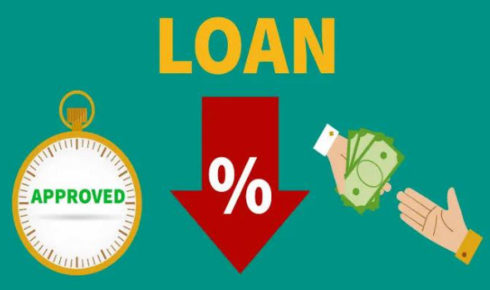
emergency loan
Facing a financial crisis? Emergency Loans can be a lifeline, but they come with risks. Discover the pros, cons, and innovative strategies to make informed decisions when money is tight.
Imagine your car breaks down, a medical bill lands, or you face an unexpected job loss. In moments like these, an emergency loan can feel like a beacon of hope. These short-term loans are designed to provide quick cash during urgent situations, offering relief when you need it most. But while an emergency loan can be a lifesaver, it’s not without pitfalls. This article dives into the benefits and risks of taking out an emergency loan, equipping you with the knowledge to decide if it’s the right move for your crisis. Let’s explore how to navigate these loans wisely and avoid common traps.
The Benefits of Emergency Loans: A Financial Lifeline
Emergency loans are built for speed and accessibility, making them a go-to option during a financial crunch. Here’s why they can be a game-changer:
Fast Access to Cash
When time is of the essence, emergency loans deliver. Most lenders process applications within hours, and funds can hit your account the same day. This speed is critical for urgent expenses like medical emergencies or overdue bills.
Flexible Eligibility
Unlike traditional loans, emergency loans often have lenient requirements. You may qualify even with a less-than-perfect credit score, making them accessible to a broader range of borrowers.
No Collateral Required
Many emergency loans are unsecured, meaning you don’t need to put up assets like your car or home. This reduces the risk of losing valuable property if you struggle to repay.
Covers a Range of Needs
From unexpected repairs to sudden travel costs, Emergency Loans offer flexibility in how you use the funds. They’re a versatile tool for tackling life’s surprises.
The Risks of Emergency Loans: What to Watch Out For
While emergency loans can be a quick fix, they come with risks that can worsen your financial situation if you’re not careful. Here’s what to consider:
High Interest Rates
Emergency loans often carry steep interest rates, sometimes exceeding 300% APR for payday loans. This can make repayment a burden, especially if you borrow more than you can afford.
Short Repayment Terms
These loans typically require repayment within weeks or months. If you’re unable to pay on time, late fees and interest can pile up, trapping you in a cycle of debt.
Potential for Debt Spirals
Borrowing to cover one crisis can lead to another if you can’t repay quickly. Rolling over loans or taking out new ones to pay off old debts can create a dangerous financial spiral.
Impact on Credit
Missing payments or defaulting on an Emergency Loan can damage your credit score, making it harder to secure loans in the future.
Key Takeaway: High costs and short terms make emergency loans risky if not managed carefully.
Tips for Using Emergency Loans Wisely
To maximise the benefits and minimise the risks, follow these actionable tips:
- Borrow Only What You Need: It’s tempting to take the maximum amount offered, but borrowing more than necessary increases your repayment burden. Calculate the exact amount needed for your crisis.
- Compare Lenders: Not all emergency loans are created equal. Shop around for lenders with reasonable rates and terms. Use comparison tools to find the best deal.
- Read the Fine Print: Understand the interest rate, fees, and repayment schedule before signing. Look for hidden charges like prepayment penalties or late fees.
- Have a Repayment Plan: Before borrowing, map out how you’ll repay the loan. Adjust your budget to prioritise repayment and avoid default.
- Explore Alternatives First: Consider options like borrowing from family, negotiating payment plans with creditors, or dipping into savings. These may be cheaper than an emergency loan.
Expert Insight: Financial advisor Jane Doe warns, “Emergency loans can be a tool, not a crutch. Always prioritise repayment to avoid long-term financial strain.”
Alternatives to Emergency Loans
Before opting for an Emergency Loan, consider alternatives that could save you money and avoid debt. If you’ve built an emergency fund, tapping into personal savings is a cost-free way to handle unexpected expenses. Alternatively, using a credit card with a low interest rate or a 0% introductory offer can be a more affordable option for short-term needs. Many service providers, such as hospitals or utility companies, offer flexible payment plans to spread out costs over time.
Additionally, local charities, government programs, or nonprofit organisations may provide financial assistance tailored to specific crises. A smart strategy is to start building a small emergency fund—even £500 can significantly reduce your reliance on loans for future surprises.
How to Spot a Reputable Lender
Not all lenders are trustworthy. To avoid predatory practices, look for these signs of a reputable lender:
- Transparency: Clear disclosure of interest rates, fees, and terms upfront.
- Licensing: Ensure the lender is licensed to operate in your state or region.
- Customer Reviews: Check online reviews for feedback on the lender’s reliability and customer service.
- No Pressure Tactics: Avoid lenders who push you to borrow more than you need or rush you into signing.
Making the Decision: Are Emergency Loans Right for You?
Deciding whether to take out an Emergency Loan requires weighing your immediate needs against long-term consequences. Ask yourself:
- Can I repay the loan on time without straining my budget?
- Have I explored all other options?
- Is the lender reputable, and are the terms clear?
If the answer to these questions is yes, an emergency loan might be a viable solution. However, if repayment seems uncertain or alternatives are available, it’s wise to pause and reconsider.
Wrapping Up
Emergency Loans can be a vital resource when life throws unexpected financial challenges your way. They offer quick cash and flexibility, but their high costs and short repayment terms demand careful planning. By borrowing only what you need, comparing lenders, and having a solid repayment strategy, you can use emergency loans effectively without falling into a debt trap. Always explore alternatives and choose reputable lenders to protect your financial health. With the right approach, you can navigate a crisis with confidence and keep your finances on track.

